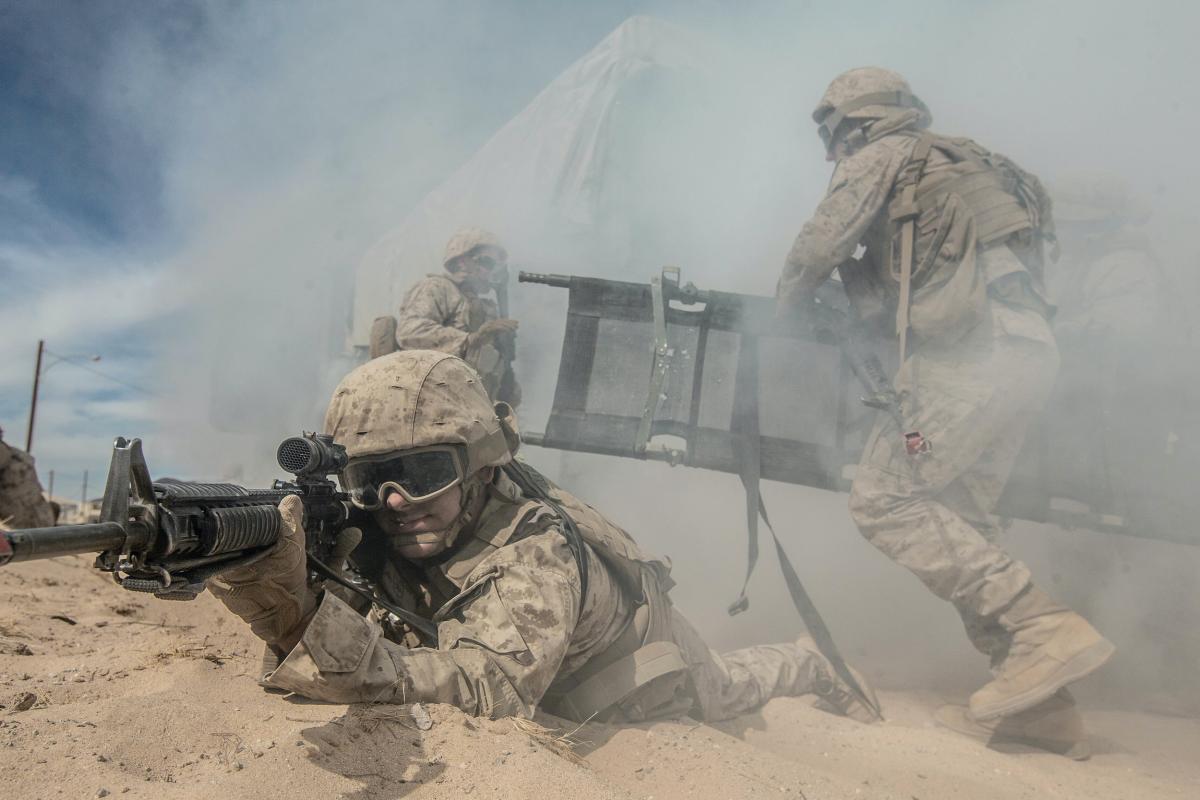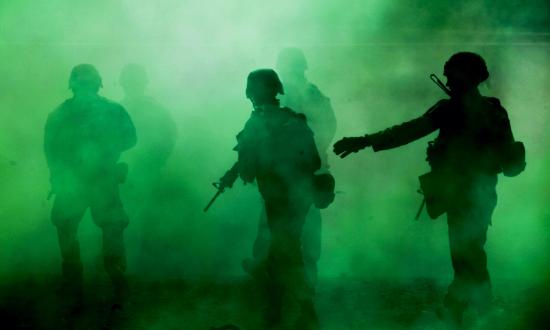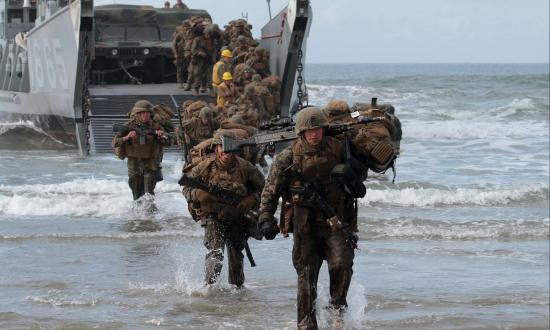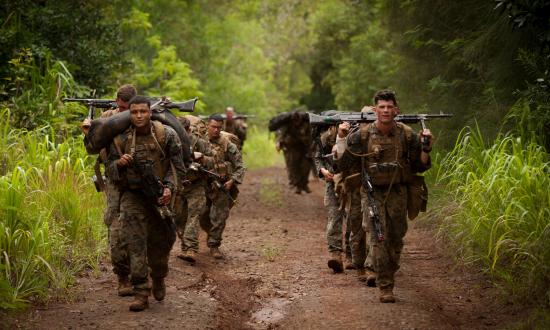The recent article by retired Commander Norman Denny, “How to Absorb the Marine Corps into the Army and Navy,” offered new life to an old discussion within U.S. national security circles: Does America need a Marine Corps? Denny answers in the negative, arguing that the Army, Navy, and Air Force are capable of performing the Marine Corps’ missions, and proposes ways to execute this absorption.
First, the naval community must tip its hat to Commander Denny for his willingness to recommend a proposal he certainly knew would result in significant push back. This conversation is often rife with emotion and parochialism, and it is rare to see clear-eyed arguments made about this subject. Offering such a heterodox yet structured argument, his article embodies the U.S. Naval Institute’s mission of daring to read, think, speak, and write.
That said, Denny’s arguments don’t make the case. He overestimates the capabilities of the other services to take on the Marine Corps’ missions, underestimates the massive structural challenges inherent in his proposal, does not account for the ever-adapting nature of the Marine Corps as a service, and does not appreciate the unique synergy of the service as a fighting force.
Commander Denny frames much of his argument around the dialogue occurring after World War II and the Korean War. While important, this ignores the changes that have occurred over the ensuing seven decades. Denny claims that the Army can assume amphibious assault responsibilities because it performed this role at Normandy. The Army did indeed conduct a number of impressive amphibious operations across the European Theater of Operations in World War II, Normandy being just one of them. But the Army was capable of doing this because the units involved in those operations were manned, trained, and equipped for the task, and they worked closely with the Navy toward this aim. The Army is not capable of doing those tasks today and putting this role on the Army would require significant additional structural changes to both the Army and the Navy. For example, Marine Corps acquisitions integrate the considerations of the L-Class ships from which that equipment might have to be projected. How much Army equipment currently meets this bar?
Regarding Marine aviation, Commander Denny claims the Navy and Air Force are fully capable of providing close-air support, but uses as his citation an article showcasing a Navy F/A-18 shooting down a Syrian Su-22 fighter-bomber. This air-to-air combat role is functionally and completely different from the role of close air support (CAS). While other services possess aircraft that can perform close-air support, doing this also requires integration of those pilots and their aircraft into aviation command-and-control systems for their employment in the CAS role. What makes Marine Corps aviation so effective in providing CAS is that the aircraft fall under the command-and-control of a Marine commander common to the ground forces—that is, the aviation is organic to the Marine Corps unit. For this level of effectiveness of CAS to hold under Denny’s proposal, the aviation belonging to the ground forces (in this case, now an Army unit) would also have to be organic to the Army commander common to both the ground forces and the air forces. Such an arrangement would require significant additional structural changes to the Army and/or the Navy to pull off. It would also require Army fixed-wing pilots, or the assignment of Navy fixed-wing pilots to the Army. Both options are rife with additional challenges requiring myriad structural changes.
Regarding what the nation wants, Commander Denny suggests the Marine Corps will demand the status quo. This contention seems to completely bypass every discussion on Marine Corps force design that has dominated Marine Corps professional discourse since General David H. Berger became the commandant. The 38th Commandant’s Planning Guidance, Force Design 2030, Talent Management 2030, and a Concept for Stand-In Forces are fundamentally about radically changing the status quo to better pursue naval integration. The Commandant himself has published numerous articles in Proceedings and elsewhere advocating for these changes, while many other naval professionals have further discussed and fiercely debated these changes. The bottom line is that the Marine Corps is probably the last service that will demand the status quo from Congress. As it has historically demonstrated, the Marine Corps will instead continue to be a chameleon and change to fit the needs of the nation.
Later, Denny suggests that incorporating the Marine Corps into the Army would “eliminate the need for the Commandant to go to the Army and beg for future armor and artillery support.” In the context of a joint operation, if Marine Corps forces needed additional armor or artillery support, this would be requested from the commander of those Marine Corps forces through the joint task force commander, and not the Commandant, who has no role in the command-and-control of combat forces. Further, this comment does not seem to appreciate the “why” behind the divestment of armor and the replacement of tube artillery for rocket artillery—to support force-design efforts for naval integration and allow Marines to serve as an extension of the fleet, a task for which armor is poorly suited.
Finally, the theme underwriting all these critiques is that an organization is more than its line-and-block chart would suggest, and units are not truly interchangeable. Service culture matters, as this bleeds into doctrine, tactics, standards, and ultimately into the capabilities of one unit versus another. To absorb the Marine Corps into another service would ultimately rob the organization of the culture that makes it so much more valuable and effective than the sum of its parts—and, consequently, something uniquely effective and capable. Marines are different, in the best way possible. Americans knows this—and that is why they want a Marine Corps.






